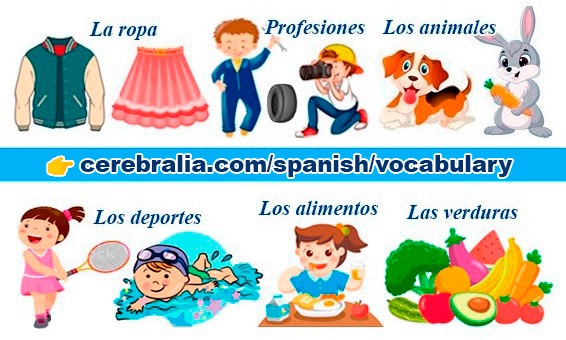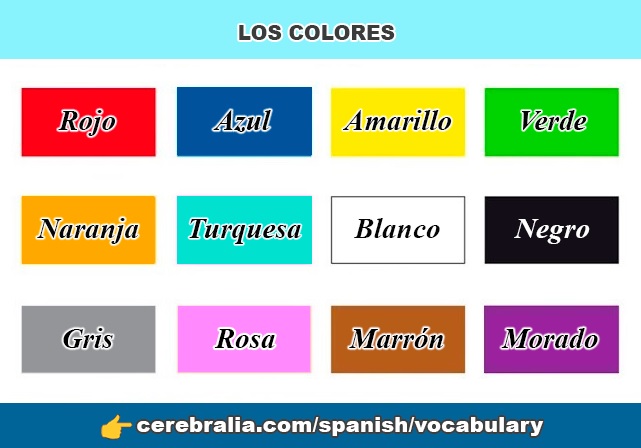Share on:
Vocabulary learning is an essential part in foreign language learning. The objective of the vocabulary mastery is to make the students have a good language proficiency in the language skills. It depends on the quality and quantity of the vocabulary that they have mastered. The richer the vocabulary that can be mastered by the students, they will get the better skill that can be reached in using language.
The importance of vocabulary is in understanding. A person who has never studied the structures of the Spanish language can make himself understood by a native speaker using an acceptable amount of word combinations. On the contrary, if someone handles grammatical structures and his vocabulary is insufficient, his communicative process will be unsuccessful.

Without sufficient vocabulary learners cannot understand others or express their own ideas. Wilkins wrote «While without grammar very little can be conveyed, without vocabulary nothing can be conveyed». Lewis wrote «Lexis is the core or heart of language». You could read a text almost without using grammar, but without vocabulary you cannot get anywhere.
Spanish language has an extensive vocabulary. At first it may seem very difficult, but little by little you will become familiar with each of them. In order to remember all the new words that you are learning, it is important to put them into practice, so in each vocabulary lesson we provide you with a lot of examples sentences so that you can use them in your conversations.
So, start learning Spanish vocabulary today and practice it every day. You can do it! 🙂
Los colores
(The Colors)

In the table below you will find the Spanish colors in singular and plural form. If the gender of the noun is masculine it is represented in blue, if it is feminine it is represented in red.
| Color | Singular | Plural | |
|---|---|---|---|
| White | blanco | blancos | |
| blanca | blancas | ||
| Black | negro | negros | |
| negra | negras | ||
| Yellow | amarillo | amarillos | |
| amarilla | amarillas | ||
| Red | rojo | rojos | |
| roja | rojas | ||
| Pink | rosado | rosados | |
| rosada | rosadas | ||
| Orange | anaranjado | anaranjados | |
| anaranjada | anaranjadas | ||
| Purple | morado | morados | |
| morada | moradas | ||
| Silver | plateado | plateados | |
| plateada | plateadas | ||
| Golden | dorado | dorados | |
| dorada | doradas | ||
The following are neutral colors, they can be used with both feminine and masculine nouns, they only vary in number. As you can see there are two ways of saying the pink and orange colors, both are widely used in Spanish, so you can use either of the two to talk about these colors.
| Color | Singular | Plural | |
|---|---|---|---|
| Blue | azul | azules | |
| Green | verde | verdes | |
| Turquoise | turquesa | turquesas | |
| Violet | violeta | violetas | |
| Pink | rosa | rosas | |
| Orange | naranja | naranjas | |
| Brown | marrón | marrones | |
| Gray | gris | grises | |
Ejemplos:
- El cielo es azul.
(The sky is blue) - Él tiene ojos marrones.
(He has brown eyes) - Mis zapatos son negros.
(My shoes are black) - Mi color favorito es el rojo.
(Red is my favorite color) - Le encantaba usar su camisa rosa.
(She loved to wear her pink shirt) - Le encantaba usar su camisa rosada.
(She loved to wear her pink shirt) - Ella está usando un vestido verde.
(She is wearing a green dress) - ¿De dónde sacaste esa bufanda naranja?
(Where did you get that orange scarf?) - ¿De dónde sacaste esa bufanda anaranjada?
(Where did you get that orange scarf?) - Los colores primarios son: el rojo, el verde y el azul.
(The primary colors are red, green and blue) - Si combinas el azul con el rojo, obtendrás el morado.
(If you mix blue and red, you'll get purple)
🥇 Find out more: 🙂
✅ Funny jokes about animals in Spanish
✅ Funny jokes about fruits and vegetables in Spanish
✅ Funny jokes about prehistoric life in Spanish
✅ Spanish songs translated into English 🎵

